- Private Family Tours
- 2 Hour Free Oxford Walking Tour
- Oxford University & City Tour with Alumni Guide
- Christ Church With Extended University Tour
- Harry Potter Tour of Oxford
- Oxford Ghost Tour
- Oxford Bike Tour
- Oxford Bike & Walking Tour
- Oxford to Stonehenge and Bath
- Blenheim Half Day Tour
- Private Day Tours
- School Group Tours
- Foreign Language Oxford Walking Tours
- All Our Oxford Tours
- Cambridge Free Walking Tour
- Cambridge University & King’s College Tour
- Private Family Tour of Cambridge
- Group & Student Tours of Cambridge
- London Day Tour
- Free London Walking Tour
- Private Tours of London
- School Groups Tours of London
- Day Trips From London
- Bath Free Walking Tour
- Roman Baths & City Walking Tour
- Private Family Bath Walking Tour
- Group Tours of Bath
- York Free Walking Tour
- York Minster & City Tour
- Private Tours of York
- Group Tours of York
- Oxford City Guide
- London City Guide
- Cambridge City Guide
- Bath City Guide
- Become A Guide


Radcliffe Camera
Oxford radcliffe camera ultimate guide.
The Oxford Radcliffe Camera is one of the city’s most iconic sites. In order to help you with your visit, we’ve put together this Radcliffe Camera Ultimate Guide. Enjoy!
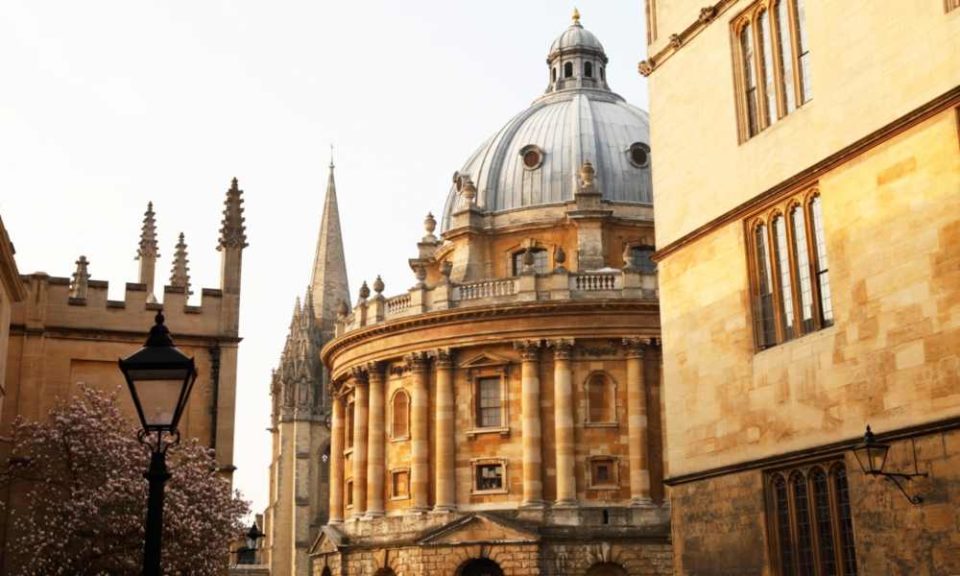
T he Radcliffe Camera is a building of Oxford University, designed by James Gibbs in neo-classical style and built in 1737-49. It is perhaps the most iconic building in the whole of Oxford, leading to many tourists assuming it must be a town hall.
It’s actually a library, with three floors full of books and gorgeous spiral staircases winding up to the top gallery. The library is deeper than it is tall, with a massive underground chamber beneath it called the Gladstone Link in which many texts are housed. You can’t take a book out of the Gladstone Link, leading to many students disappearing down into the dark, windowless space for days.
Unfortunately, since the Radcliffe camera is a working library full of stressed out students, it isn’t accessible to visitors. However, you can find out even more about this stunning building on our amazing Oxford Walking Tour. Click below to find out more about Footprints’ Oxford Walking Tour!
Getting Here By Tube
Oxford Train Station
Getting Here By Bus
High Street Bus Stop T3, T3, L3, L1, L2, T1, T2
Getting Here By Car
Broad Street Car Park, 52 Broad St, Oxford OX1 3BS

VISIT THIS SITE ON OUR FREE OXFORD WALKING TOUR
You can find out more information of this site, and some of the most iconic sites in the city, on our free Oxford Walking Tour!
For more information, click here
Previous Tour
Booking for radcliffe camera.
- Work With Us / Where To Meet Us

Plan your visit

The Bodleian Library, Radcliffe Camera and Weston Library are three of Oxford's most iconic libraries, located in the heart of the city.
Get exclusive, behind-the-scenes access on a guided library tour , or explore the historic city of Oxford on a walking tour with one of our expert guides.
Now on at the Weston Library are two fantastic exhibitions, part of our Season of Great Writers. Chaucer Here and Now presents Geoffrey Chaucer as you've never seen him before (until 28 April 2024) . Write, Cut, Rewrite explores the creative importance of editing in literature, often referred to as ‘killing your darlings’ (until 5 January 2025). Entry to our exhibitions is free, and no ticket is required.
While you're at the Weston, don't miss our café and shop .
Tickets and opening hours
For many of our tours, you can buy tickets in advance online .
We also sell a portion of tour tickets on the day, as well as audio guides. Please visit the information desk in the Weston Library to purchase these.
Check our upcoming closures before you visit.
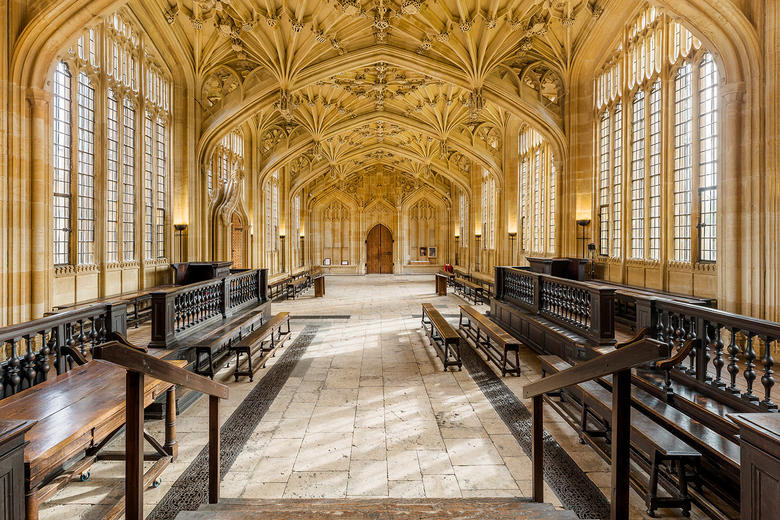
Explore the Divinity School
Look inside the University of Oxford's oldest teaching room
Monday – Friday: 9am – 5pm Saturday: 10am – 5pm Sunday: 11am – 5pm
£2.50 per person
Catte Street, OX1
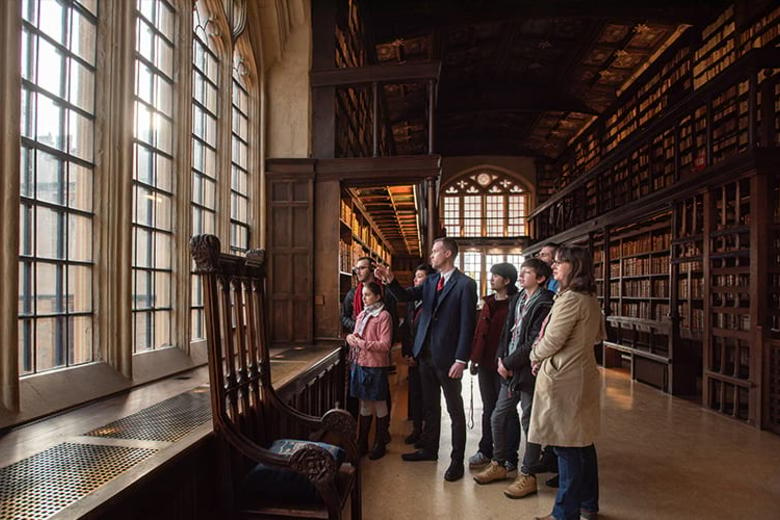
Guided tours: Bodleian Library, Radcliffe Camera and more
Guided tours are the only way for members of the public to see inside these beautiful library spaces
Available in English From £10 per person, book in advance
Accessible by guided tour : Old Quadrangle, Divinity School, Bodleian Old Library, Duke Humfrey's Library, Convocation House, Chancellor's Court, Radcliffe Camera
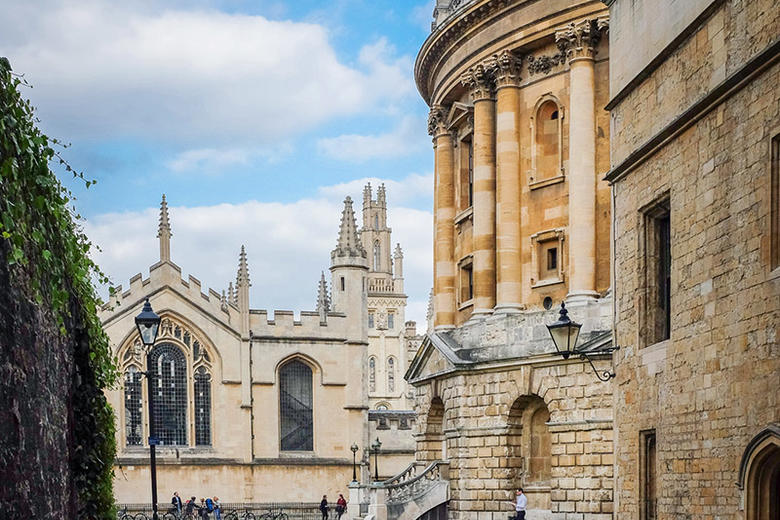
City of Oxford walking tours
Discover the vibrant history of the city of dreaming spires, home to the oldest university in the English-speaking world
Available in English Tours run daily: 90–120 minutes From £20 per person
Broad Street, OX1
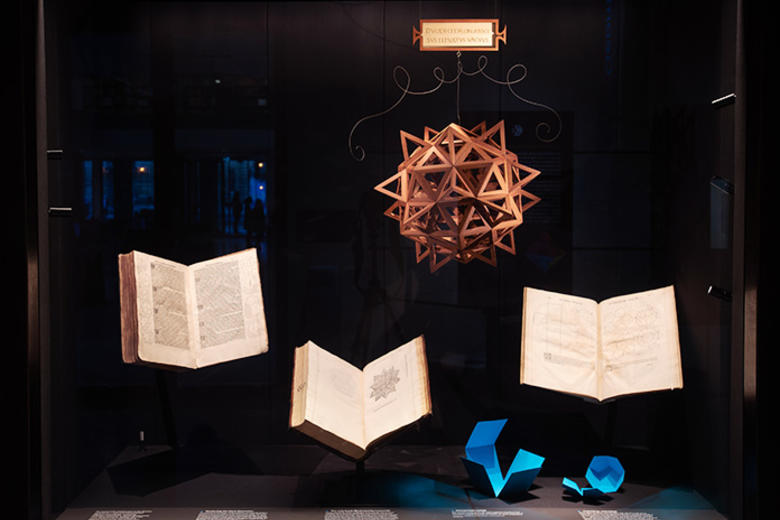
Exhibitions at the Weston Library
Discover our collections up close
Monday – Saturday: 10am – 5pm Sunday: 11am – 4pm
Free entry for everyone, just drop in
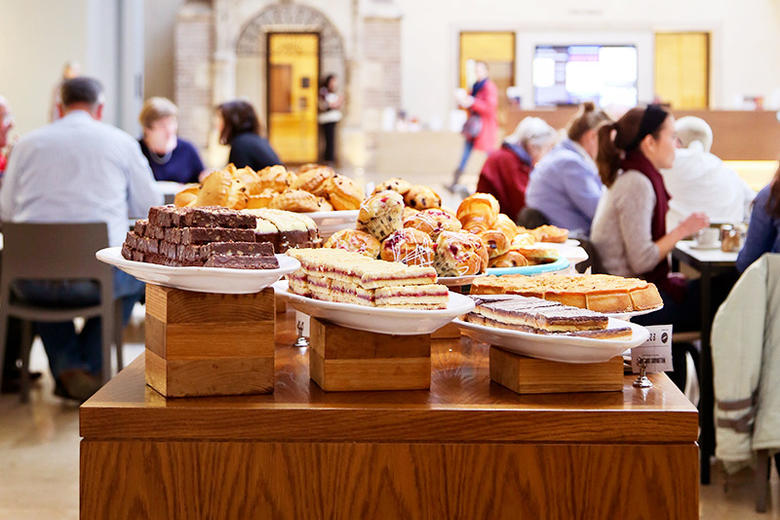
Blackwell Hall at the Weston Library
Take a break in our café or the Space for Reading, and visit the Bodleian Shop for souvenirs and gifts for book-lovers.
Monday – Friday: 9am – 5pm Saturday: 10am – 5pm Sunday: 11am – 4pm
Upcoming closures: check when planning a visit
- Friday 19 April: The Divinity School will be closed from 3pm. There will be Library only tours available from 3pm onwards.
- Saturday 20 April: The Divinity School will be closed from 4pm.
- Wednesday 24 April: The Divinity School will be closed from 12.30pm. There will be Library only guided tours available to buy from the ticket desk in the Weston Library.
- Saturday 27 April: The Divinity School will be closed from 3.30pm.
- Tuesday 30 April: There will be no 60-minute tours after 10.30am.
- Friday 3 May: The Divinity School will be closed all day. Library only guided tours will be available to buy from the ticket desk in the Weston Library.
- Saturday 4 May: There will be no 60-minute tours on this day.
- Friday 10 May: The Divinity School will open at 9.30am. There will be no 60-minute tour at 2pm.
- Saturday 11 May: The Divinity School will be closed all day. Library only guided tours will be available to buy from the ticket desk in the Weston Library.
- Sunday 12 May: The Divinity School will closed at 4pm.
- Saturday 18 May: The Divinity School will be closed all day. Library only guided tours will be available to buy from the ticket desk in the Weston Library.
- Sunday 19 May: There will be no 60-minute tours available.
- Wednesday 22 May: There will be no 60-minute tours available until 1pm.
- Friday 24 May: There will be no 60-minute tours after 10.30am.
- Sunday 26 May: The Divinity School will be closed at 4pm.
- Tuesday 28 May: The Divinity School will be closed from 2.45–4pm.
Visitor guidelines
We ask the public to follow these rules when visiting the Bodleian Libraries exhibition galleries in the Weston Library. We aim to provide a safe environment for our visitors and make sure that our collections are preserved for the future.
- Food and drink are not allowed in the galleries, including bottled water. The café is situated in Blackwell Hall for visitor refreshment.
- Children are very welcome, but please make sure they are supervised at all times.
- Pushchairs and buggies are welcome in the galleries. At very busy times we may need to limit the number of buggies in the gallery, and this will be at the discretion of the room attendant. Please note that very large double-buggies cannot be brought into the exhibition galleries, due to the narrow walkways between exhibits.
- Assistance dogs are welcome in the galleries.
- Large items such as rucksacks or wheeled cases may not be taken into the galleries, due to space limitations. This includes any item larger than aircraft carry-on luggage. Medium-sized backpacks or cases should not be worn on the back or wheeled, but may be carried. Very small bags and day-packs may be carried on the owner’s back. These rules help avoid damage to works on the walls or to the display cases. The room attendant will use his or her judgement on which bags may be admitted, and how they should be carried, to avoid any risk of damage to the galleries, collections, or other members of the public. For guidance, bags larger than approx. 50 x 40 x 25 cm will be excluded from the galleries. We are unfortunately not able to provide any storage for large bags which have been excluded. You must not leave bags unattended in Blackwell Hall.
- Please do not bring wet umbrellas into the galleries. You can leave coats or umbrellas on the coat rack outside the galleries (please note that this is at the owner’s risk).
- You are very welcome to take photographs, as long as this is for your personal, non-commercial use only. We do not allow the use of video cameras, flash and tripods (including selfie sticks).
- You may bring pencils into the galleries. Pens and markers are not allowed.
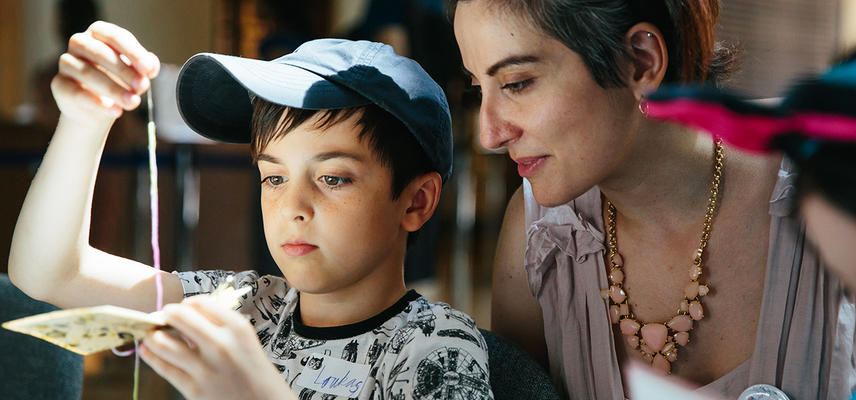
Visitors of all ages are welcome at the Bodleian Libraries. Learn more about our facilities and activities for families.
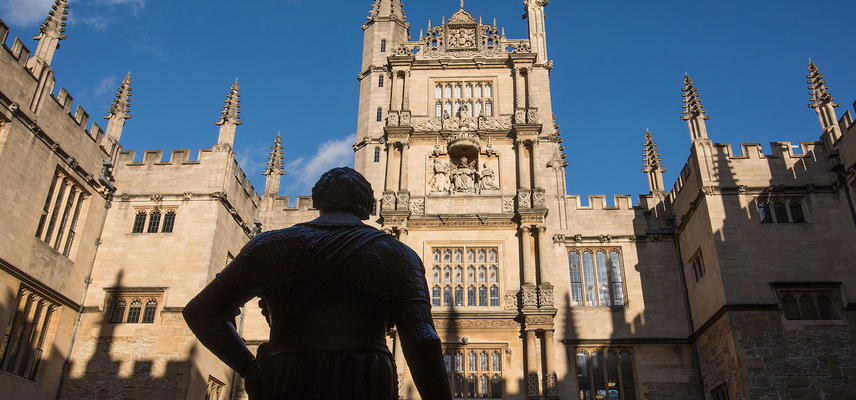
History of the Bodleian Library
Discover over 400 years of this magnificent library.
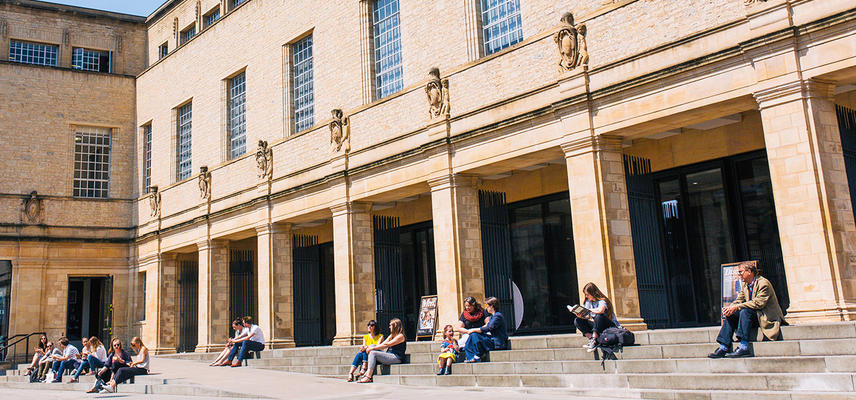
How to get here
Located in the centre of Oxford, the Weston Library and Bodleian Old Library are easily accessible by public transport.
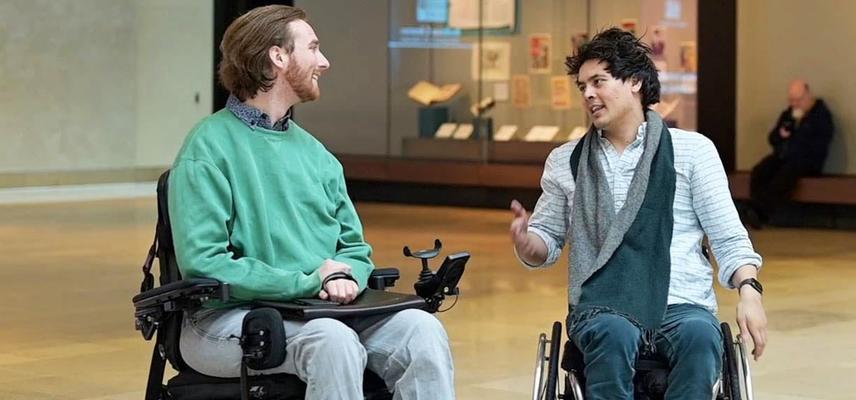
Accessibility
Our guide to accessing our buildings and the assistance available for our visitors.
- Oxford University Tours
- Applying To Oxford
- Oxford University Tours Reviews
- Oxford Weather
Radcliffe Camera
- October 20, 2023 October 20, 2023
Last Updated on October 20, 2023 by Iain

Have you ever heard of the Radcliffe Camera ? It’s not just any building; it’s an architectural gem nestled in the heart of the University of Oxford, England. Designed by the talented James Gibbs in the captivating Baroque style, this masterpiece was constructed between 1737 and 1749. Its primary purpose? To house the prestigious Radcliffe Science Library.
Today, the Radcliffe Camera stands as an iconic Oxford landmark. It’s not just for show, though. This building is a bustling hub of knowledge, serving as a working library and forming an integral part of the central Bodleian Library complex. Dive deeper into its chambers, and you’ll find the History Faculty Library (HFL) calling it home. And guess what? It’s even connected to the Bodleian Old Library through the subterranean Gladstone Link, known to generations of students as the Glink.
While the Radcliffe Camera isn’t generally open to the public, there’s a silver lining! Eager to take a peek inside? You can immerse yourself in its grandeur by booking an hour-and-a-half guided tour organized through the Bodleian Library .
Table of Contents
What is the history of the Radcliffe Camera?
- Design and Construction : The Radcliffe Camera, colloquially known as the “Rad Cam” or “The Camera”, was designed by James Gibbs in a Baroque style. The construction of the building began on 17 May 1737 and was completed in 1748. It was officially inaugurated on 13 April 1749.
- Purpose : The building was constructed to house the Radcliffe Science Library. It is located to the south of the Old Bodleian, north of the Church of St Mary the Virgin, and between Brasenose College to the west and All Souls College to the east.
- Funding : The construction and maintenance of the library were funded from the estate of John Radcliffe, a physician who left £40,000 upon his death in 1714. According to the terms of his will, construction only began in 1737. The exterior was completed in 1747, and the interior was finished by 1748.
- Background : John Radcliffe attended University College from the age of thirteen and became a fellow of Lincoln College at eighteen. He had a successful medical career, and his patients included notable figures like William III and Queen Anne. He amassed a significant fortune and died childless. It was known that he intended to build a library in Oxford at least two years before his death in 1714.
- Plans : Radcliffe’s will, proved on 8 December 1714, provided for the building of a new library and stated the intention for the library to be built between St Mary’s and the schools in Catte Street. The will also provided £100 a year to maintain the new library, but only after 30 years had elapsed from his death.
- Construction Details : The foundation stone was laid on 17 May 1737. The construction involved various craftsmen, including masons, carpenters, plumbers, stone carvers, wood carvers, plasterers, and locksmiths. The exterior of the building was completed by 1747, and the building was fully finished in 1748.
- History as an Independent Library : The library’s collection grew slowly. The first major purchase was books to the value of £45 from a seller in Newport in 1751. The library’s acquisitions were varied for the first sixty years, but from 1811 its intake was confined to works of a scientific nature.
- Later History : In the mid-19th century, Henry Wentworth Acland, then librarian, proposed that the Radcliffe Library building merge with the university and its collection of books be moved to the newly constructed Radcliffe Science Library. This proposal was accepted, and the building became known as the Radcliffe Camera, serving as a reading room for the Bodleian. Between 1909 and 1912, an underground book store of two floors was constructed beneath the north lawn of the library, connecting it with the Bodleian.
Who was Dr John Radcliffe?

Alright, let’s chat about Dr. John Radcliffe and his fascinating life!
So, John was likely born around the tail end of 1652 in Wakefield. His family had been there for a while, and his dad was a lawyer and also the Governor of the House of Correction. Growing up with three sisters, some folks reckon that’s why he had a bit of a superior air about him. He started his education at Wakefield Grammar School.
When he was just 13 (though his papers said he was 15), he headed off to University College, probably because of its ties to Yorkshire. He did pretty well for himself there, earning his B.A. by 1669. By 1670, he was a Fellow of Lincoln College. Fast forward to 1682, and he’s a full-fledged Doctor of Medicine. He had dreams of practicing medicine right from college, but there was this rule about taking Holy Orders that got in the way.
In 1684, he decided to move to the bustling city of London and set up shop in Covent Garden. And let me tell you, his career as a doctor just took off! He was so good that he started charging 20 guineas a day. Even royalty like James II, William III, and Princess Anne were his patients. And while he had Jacobite leanings politically, he was smart enough to accept the 1688 Revolution.
By 1690, he was an M.P. for this tiny village called Bramber in Sussex. His fees were through the roof, but he had a bit of a tiff with the king when he cheekily said he wouldn’t trade the king’s three kingdoms for his own two legs.
Fast forward a bit, and by 1704, he’s living in the posh Bloomsbury Square. Two years later, he bought a massive estate in Linton-on-Ouse in Yorkshire. By 1709, he was rolling in money, with a net worth of about £8,000. In 1713, he added the Wolverton estate in Buckinghamshire to his collection and even snagged a parliamentary seat there. The next year, he became Deputy Lieutenant for Buckinghamshire and moved into a grand house in Carshalton. Sadly, he only enjoyed it for six months before passing away on November 1st, 1714. He was laid to rest in St. Mary’s Church in Oxford.
Now, about his will and the Radcliffe Trust. John was loaded when he passed, with a net worth of around £140,000. He left a chunk of his wealth to his family, including a sweet £1,000 to his sister. He also donated generously to St. Bart’s, Oxford scholarships, University College, and a massive £400,000 for a library, over 10 years. Today, the Radcliffe Trust focuses on cool projects like restoring cathedrals, promoting music, and preserving libraries. Oh, and he also left £4,000 for the Radcliffe Infirmary which opened in 1770.
Speaking of libraries, have you heard of the Radcliffe Camera? It’s the first round library in Britain. The idea was inspired by Sir Christopher Wren’s design for a circular library. It was meant as a tribute to our man John Radcliffe. It took a while to get it built, but by 1749, it was open and celebrated with three days of festivities. Over the years, it became a hub for scientific and medical knowledge. And in the 1850s, it became an annex of the Bodleian Library in Oxford.
So, in a nutshell, Dr. John Radcliffe was a pretty big deal in his time, and his legacy lives on in the institutions and buildings he helped fund and inspire.
A Grand Radcliffe Camera Banquet on June 14, 1814.

The banquet was held to celebrate what was believed to be a period of peace during the Napoleonic Wars. This “illusory peace” was short-lived, but the event itself was a grand spectacle. Many prominent figures from the allied side against Napoleon attended the banquet. One of the most notable attendees was the Duke of Wellington, a leading military and political figure of the time.
The Radcliffe Camera’s banquet was not just a regular dinner; it was one of the most lavish feasts Oxford had ever seen. The seating arrangements were so intricate that they were later documented in a line engraving in 1816. This engraving provides a detailed layout of the Radcliffe Library, showcasing the seating plan for the banquet in honor of the Royal visitors.
The event stands out not just for its political and historical significance but also for the grandeur and opulence with which it was conducted. It’s a testament to the importance of the occasion and the esteem in which the attendees were held.
To find out more about the Radcliffe Camera, come on one of my Oxford University Tours !
- Latest Posts
- Oxford Botanic Garden - April 18, 2024
- Oxford Covered Market - March 7, 2024
- Oxford Punting - February 27, 2024

Explore the tour
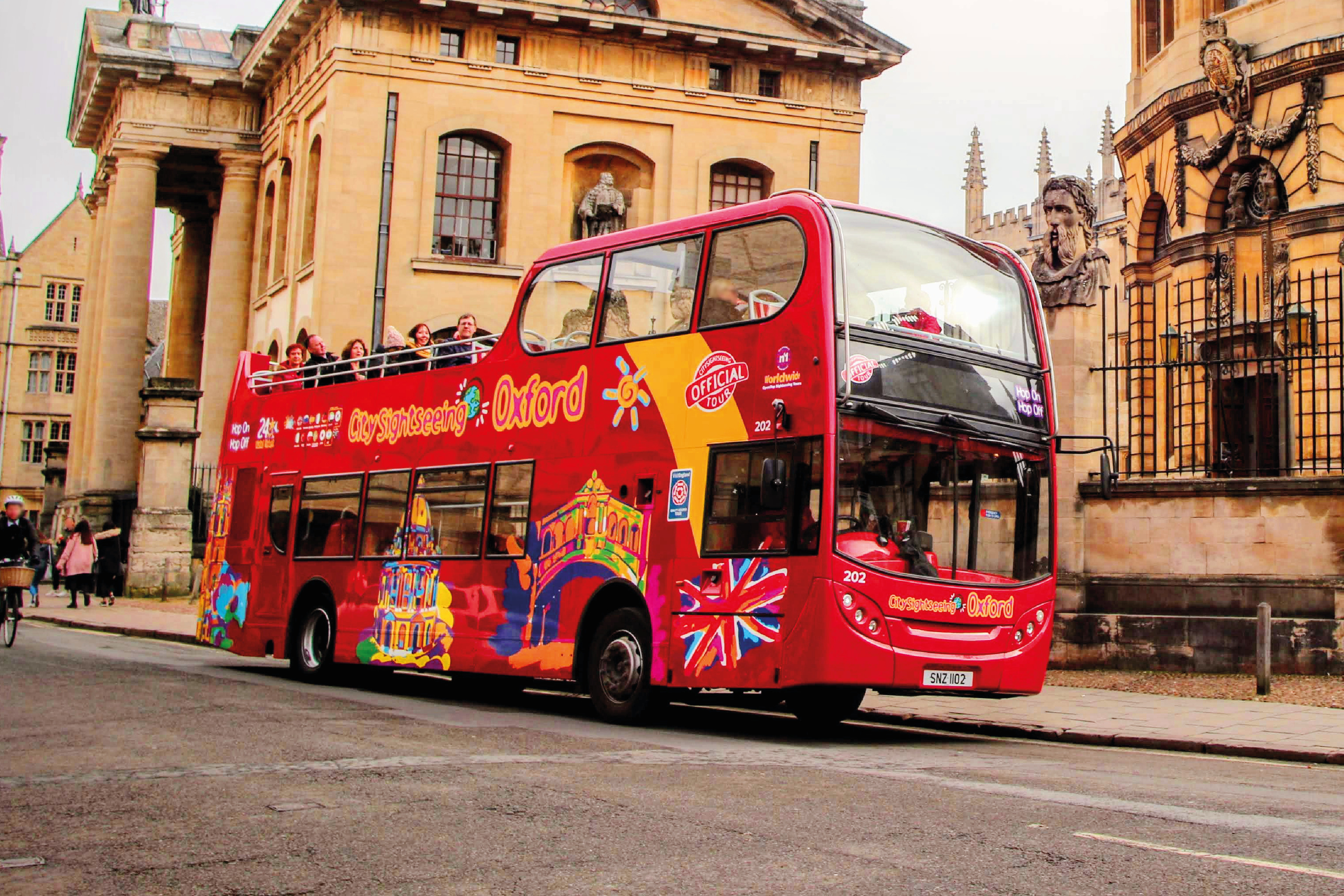
Bus Tour + Panorama
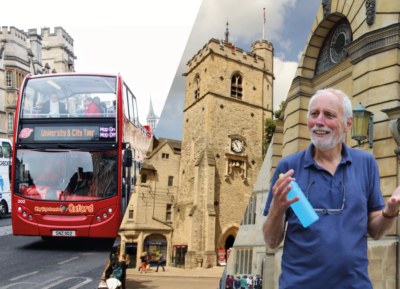
Bus Tour + Explore
Tour information.
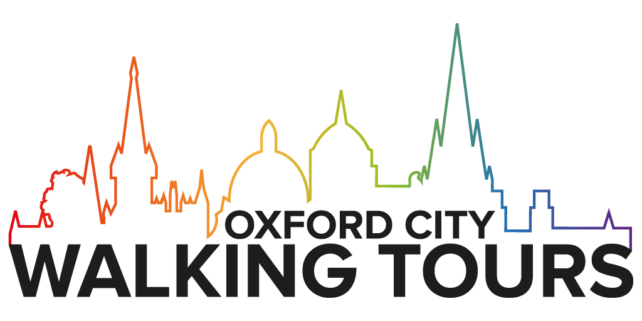
Aside from the award-winning open-top bus tours, we also operate a range of fantastic walking tours in and around Oxford!
All of our official guided walking tours are quality assessed and provided by highly trained, knowledgeable and experienced guides to ensure you fully enjoy your Oxford experience.
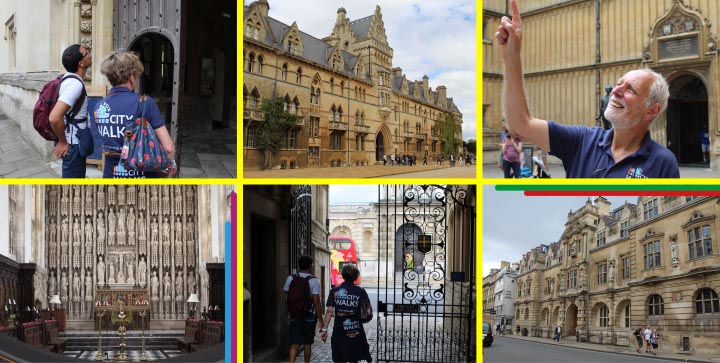
You’ll have a few options for walking tours!
Stepping Through Oxford Walking Tour
Duration: 45 mins
Discover the main attractions of Oxford, learn about the history of our fascinating city and have all your questions answered by our friendly and professional tour guides.
Town & Gown Walking Tour
Duration: 90 mins
Discover the wider area of Oxford City Centre with our longer Town & Gown Walking Tour. You’ll have a chance to learn about the history of our fascinating “city of dreaming spires” and have all your questions answered by our friendly and professional tour guides.
Vox City Walks Oxford
Duration: Unlimited for the duration of the ticket
Discover Oxford with unlimited access to our flexible walking tours.
You can join and leave our circuits as you please; escorted by local experts who are on hand to meet you throughout the day. Using our app, simply track your nearest guide and begin to discover countless visitor hotspots, including the University of Oxford, Radcliffe Camera, Carfax Tower and Oxford Castle.
The Oxford Ghost Tour
Duration: 1 hr 15 mins
The Oxford Ghost Tour is a unique interactive experience brought to you live by a professional actor in an authentic cavalier outfit (and in character).
Although beautiful, Oxford is packed with some gruesome history that many are not aware of. Join us as we take a stroll through the most haunted and historic parts of Oxford City Centre.
Pubs and Taverns Tour
Join us on our historical pub tour. This tour offers a unique experience of the Oxford City Centre, teaching you about the history of some of our oldest pubs. Hear the tales within their walls, giving you a new perspective on life amongst the dreaming spires.
Harry Potter Locations Tour
Join our tour to immerse yourself in the extraordinary world of Harry Potter. Explore the beautiful University of Oxford buildings that inspired the roofs and turrets of Hogwarts Castle and see three main buildings and many key filming locations, all while learning about Oxford’s fascinating history.
Private group walking tours
Duration: Tailored to your needs
Group walking tours of Oxford’s Dreaming Spires can be tailored to suit your needs. With a private tour, you ensure that there are no set paths, no compromises and no standing very close to people you don’t know!
Deals, Offers & Extras
Group discounts.
Booking 10 or more tickets?
Contact us for a group discount.
Private Hire & Weddings
Hire a whole bus for your own private Oxford City tour or for use at a special event.
Super Saver Tickets
Oxford bus tour + attraction tickets. Historic buildings, boat trips and more!
Buy Oxford Bus Tour Tickets Online!
Buy your tour tickets quickly, easily and securely on our website.

Radcliffe Camera

The Radcliffe Camera
The Radcliffe Camera (Rad Cam to students and locals) is a stunning circular building in the heart of Oxford. It was designed by the architect James Gibbs and completed in 1749. The building is part of the Bodleian Library and was originally built to house the library’s scientific and mathematical books.
It’s one of Oxford’s most iconic landmarks and is a popular tourist attraction for visitors to the city. The building is made of local limestone and features a stunning dome that rises high above the city’s skyline. The dome is topped by a lantern that provides natural light to the reading room inside.
The building is not open to the general public, but visitors can still admire it’s impressive architecture from the outside. There are several vantage points around the city where you can do this, including from the nearby St Mary’s Church tower and the Bodleian Library’s Divinity School.
Visitors can also take a guided walking tour of Oxford that includes a visit to the Radcliffe Camera and other notable landmarks in the city. The building is particularly beautiful at sunset when the warm light of the setting sun illuminates the limestone facade and creates a magical atmosphere.
Seeing the Radcliffe Camera is a must-do activity for anyone visiting Oxford, whether you’re an architecture enthusiast, a history buff, or simply a lover of beautiful buildings.
Good to know
- The Radcliffe Camera was built between 1737 and 1749 and was designed by the English architect James Gibbs.
- It was originally built to house the Radcliffe Science Library, but it now houses the Radcliffe Humanities division of the University of Oxford.
- The building’s distinctive circular shape was chosen because it was believed to represent the mathematical perfection of the universe.
- The Radcliffe Camera is made of limestone and has a diameter of 40 feet.
- The building features a stunning rotunda that is 70 feet high and is topped by a dome.
- The Radcliffe Camera is often referred to as “Rad Cam” by Oxford students.
- The building is surrounded by several other notable structures, including the Bodleian Library, the Sheldonian Theatre, and All Souls College.
- General public access to this library is by guided tour only.
- Students, staff, and affiliated academic visitors of the University of Oxford automatically get access to the Bodleian Libraries when they join and for the duration of your status.
- Students and academics at other universities, as well as independent and company-affiliated researchers, can apply for a reader’s card from the Bodleian Library in order to access the building.
- The Radcliffe Camera has been featured in several movies, including the Harry Potter series.
- The building is also used as a symbol of the University of Oxford and is featured on the covers of many Oxford publications.
- The Radcliffe Camera is a working library and part of the University of Oxford’s central Bodleian Libraries – 26 libraries across Oxford, including the Bodleian Old Library and the Weston Library . It is linked to the Bodleian Old Library by the underground Gladstone Link.
More from The Oxford Magazine

Weston Library, Oxford

Bodleian Libraries Group
- What to do & see in Oxford
- Must see Oxford Uni Colleges
- What to see in Oxfordshire & Cotswold
- “I wonder anybody does anything at Oxford but dream and remember, the place is so beautiful.” - W.B. Yeats
RADCLIFFE CAMERA
Oxford’s the most iconic and beautiful landmark.
There must be millions of photos of this photogenic and the most iconic of Oxford building’s – a library with more than 250 year history. It’s almost impossible to walk near the Radcliffe Camera without pausing to look at its beauty and also don’t get distracted by the grandness of the surrounding buildings.
There’s something about Radcliffe Camera that makes for great pictures. Its circular spectacular structure is the perfect example of how to create a cathedral for knowledge. It’s not a surprise this stunning location inspired CS Lewis who while pressing through the rush of people dressed in the heavy coats trudging through the snow outside the Camera, thought of the idea of peering through the coats in the wardrobe. Also, the intricately carved door and lone lamppost are said to have given him some ideas as well.
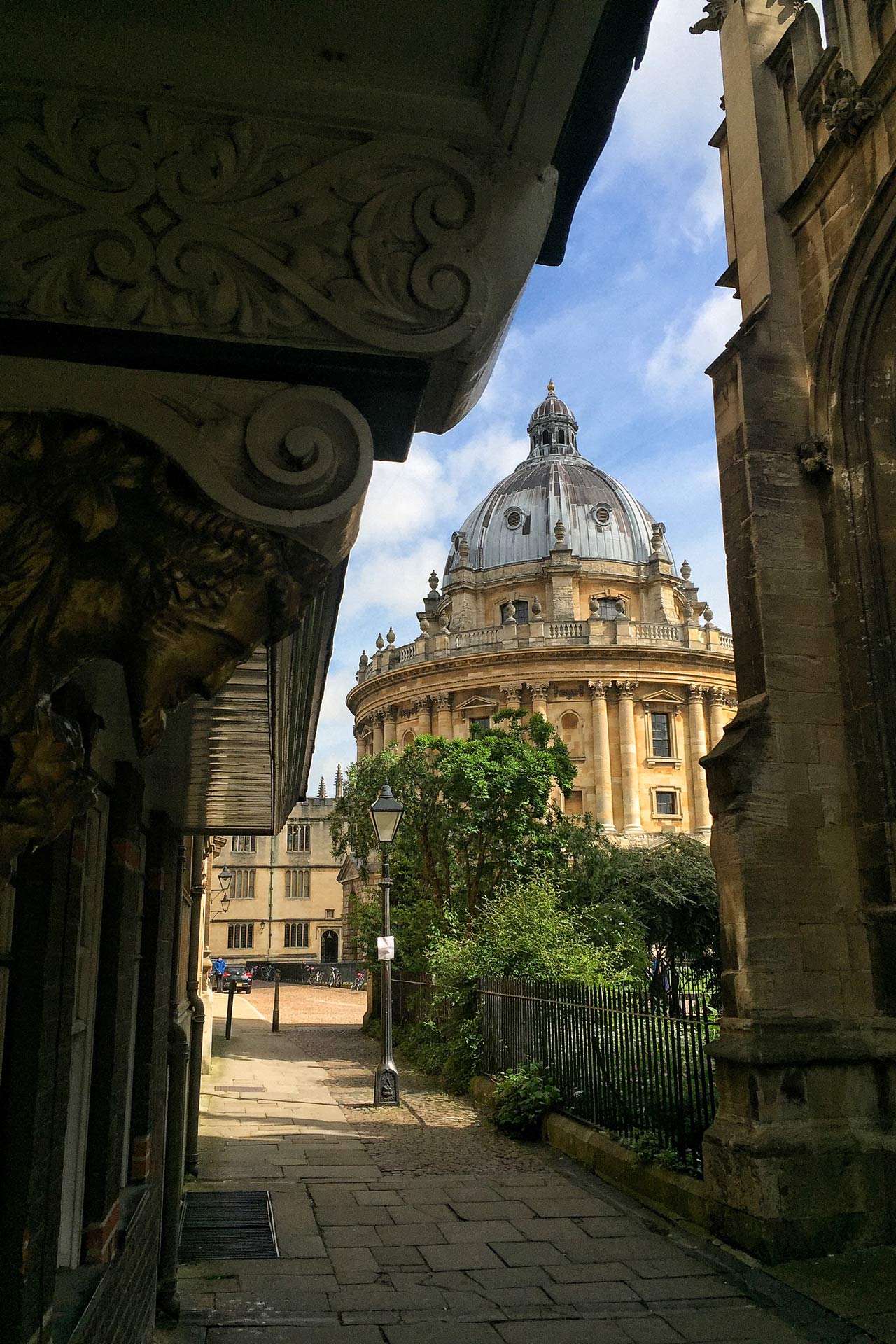
The Rad Cam, also known as the “heart of Oxford”, was designed by James Gibbs built between 1737 and 1749 with £40,000 founded by Dr John Radcliffe upon his death in 1714. Radcliffe, the most successful physician in England, began to explore the idea of a library about two years before his death. Three of his schemes propose a rectangular building and two a rotunda. In his will he decreed that the money left should be used to purchase land, build a library, purchase books, and pay a full-time librarian. Radcliff even laid out where the library should be built, despite the fact that the land was currently occupied several rows of tenement housing for University staff and a large set of gardens belonging to Brasenose College.
£100 a year were also provided to maintain the new library, but only once 30 years had elapsed from Radcliffe’s death. It would, however be more than thirty years after Radcliffe’s death before the first stone was laid as the negotiations for buying and demolishing the existing properties on the site were long and complicated.
Want to see more? Visit the full gallery and get to know the Radcliffe Camera better.
In 1721, a number of leading architects were invited to submit initial sketches for the Radcliffe camera structure, including Nicholas Hawksmoor (responsible for much of All Soul’s College) and James Gibbs Wren, Vanbrugh, Thornhill, Archer and James. However, it was not until 1734, that just two men were invited to submit final plans; Nicholas Hawksmoor and James Gibbs. Hawksmoor created a scale wooden model of his proposed design which can still be seen in the Ashmolean today .
“DID YOU KNOW…”
The Radcliffe Camera is the first example of a circular library in England. It has since become an additional reading room of the Bodleian Library consists of three main stages and of two stories internally, the upper one containing a gallery.
In the end it was Gibbs who won the competition with his circular library, the first such library of its kind in Britain, which dome’s resembles the vertical aspirations of the dome of Michelangelo’s St Peter’s in Rome. The building was completed by 1748 to house the Radcliffe Science Library and was opened to students a year later.
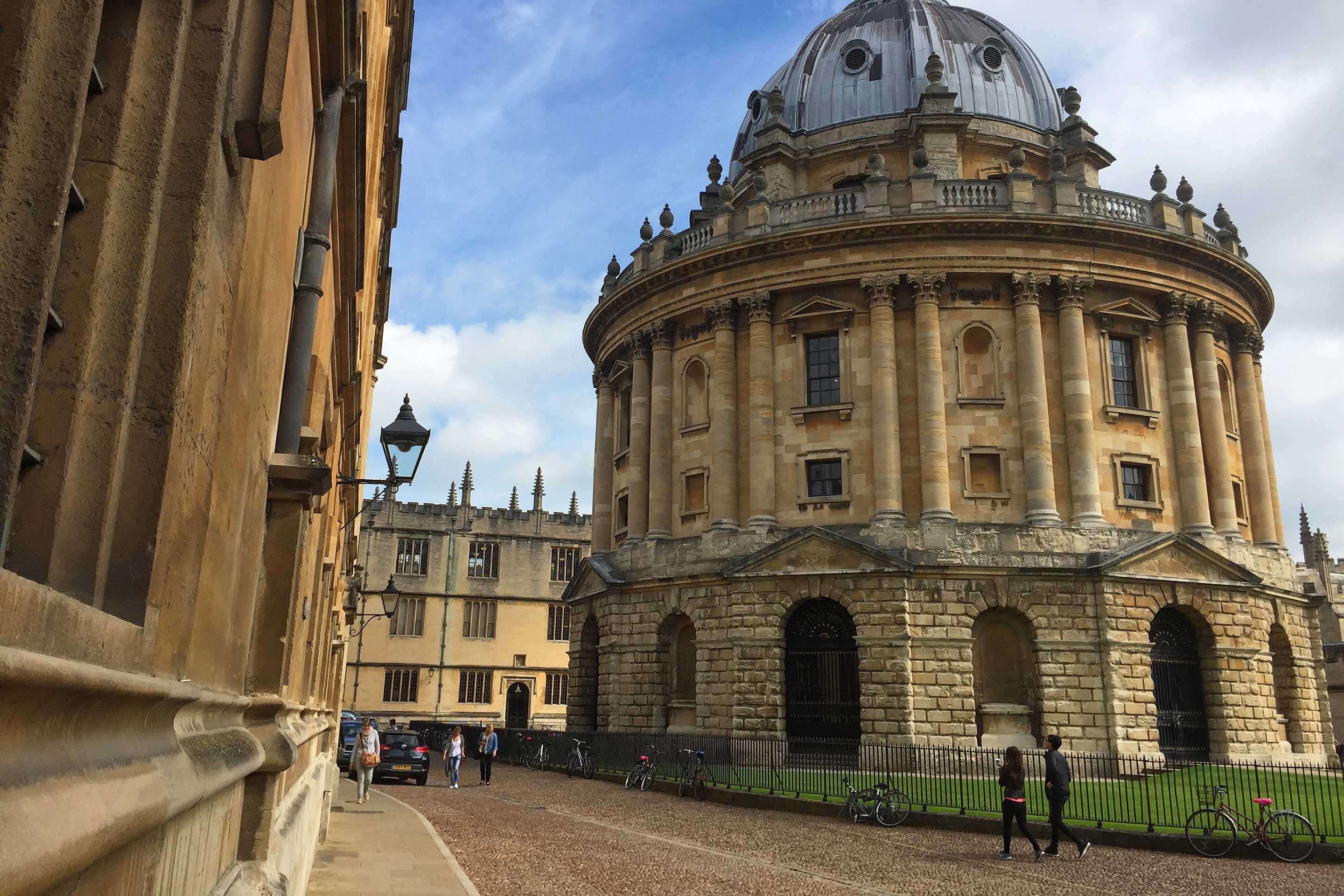
The library functioned independently of the Bodleian Library, the other main University library, but in the early 19th century an effort was made to focus on natural history and medical books. Librarian Dr George Williams narrowed its focus to the sciences. Williams brought the Library from a state of neglect up to date and brought the Library from a state of neglect up to date.
In 1860 the Radcliffe Science Library was taken over by the Bodleian Library and was renamed the Radcliffe Camera. The Camera’s collections were gradually moved to other University libraries, so that today the Camera functions as the main reading room of the Bodleian.
Video by Neil Baldwin.
The Radcliffe Camera was originally envisaged as a sort of memorial or mausoleum to celebrate the life of Dr John Radcliffe, who also endowed the University with the Radcliffe Infirmary and the Radcliffe Observatory. Since its completion, the interior and the exterior of the Camera has been admired by many.
The Library consist of two reading rooms, used primarily by undergraduates. The Upper Reading Room holds books on History, Art, Archaeology, and Anthropology, while the Lower Reading Room is focussed on English Literature and Theology. In terms of the design the structure of the Library is somewhat architecturally extravagant as the space for books is restricted to the alcoves and around the open central spaces.
There is space for around 600,000 books in rooms beneath Radcliffe Square! An underground bookstore lies beneath the lawn to the north of the Camera, and is linked by tunnels with the Old Library.
Between 1909 and 1912 an underground bookstore of two floors, called “the Radcliffe Link” or “the Link”, was constructed beneath the north lawn of the library with a tunnel connecting it with the Bodleian. In 2011 “the Radcliffe Link” was refurbished as reading rooms, and opened as the “Gladstone Link”.

When exploring Radcliffe Square make sure to visit other nearby attractions such as Bodleian Library , Brasnose College, Bridge of Sights and The University Church of St Mary the Virgin, which offers the best view of the square from the top of its tower.
The gorgeous building has been mentioned by many popular novelists such as J.R.R. Tolkien as well as CS Lewis, and featured in many famous television series, such as Inspector Morse, Inspector Lewis and Endeavour. The Camera was used as a location in the films like film The Golden Compass, Young Sherlock Holmes, Opium Wars, The Saint, and The Red Violin.
Tours: The building is part of the Bodleian Library , and you can only gain access on one of the tours, which only occur a few times a week.
Bodleian Café: In need of a break? Enjoy a bite to eat at the new Bodleian Café in the Weston Library.
Tours: The exterior of the Library is extremely photogenic. If you want a good shot, go early in the morning to avoid the crowds.
Bodleian Shop: Find beautiful presents from the Bodleian Shop .
Thanks for visiting my website!
Recent portfolios.
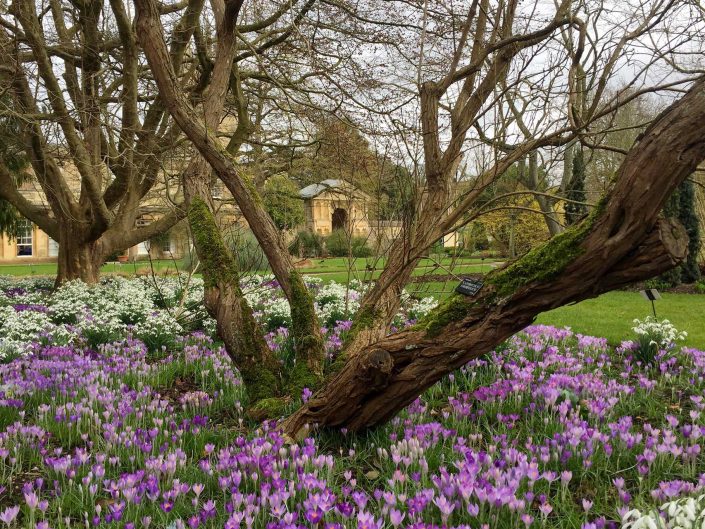
The University of Oxford Botanic Garden
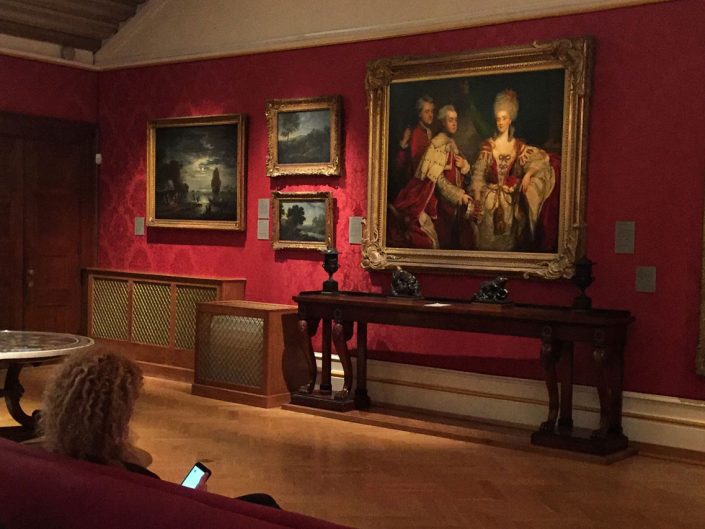
The Ashmolean Museum
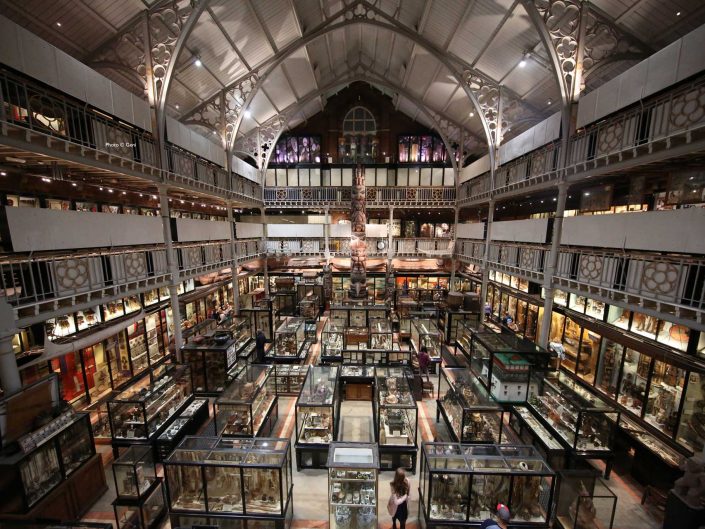
Pitt Rivers Museum
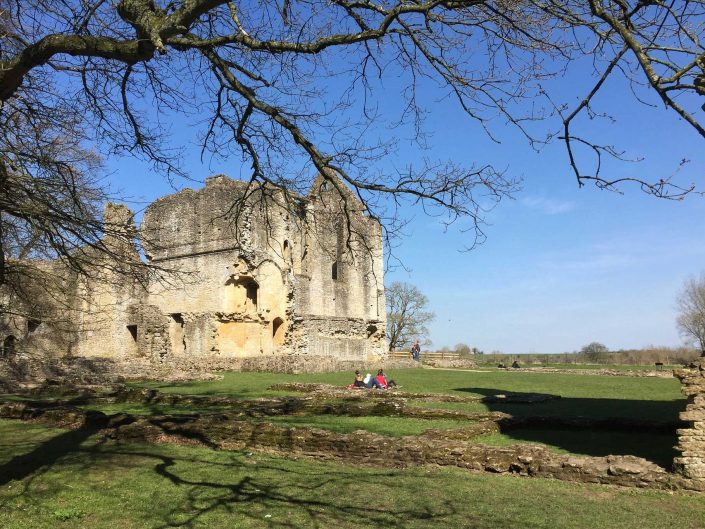
Ruins of Minster Lovell Hall
Kasia_piekut.

the-history-of-radcliffe-camera-all-you-need-to-know
Radcliffe camera inside: an exclusive tour through history, what is the radcliffe camera and what was its original purpose.
The Radcliffe Camera is a famous landmark in Oxford, England. It was built in the 18th century and was originally intended to house the Radcliffe Science Library. Today, it serves as a reading room for the Bodleian Libraries and is a popular tourist attraction due to its stunning architecture.
The Radcliffe Camera, located in the heart of Oxford, is an iconic landmark that holds immense historical and architectural significance. This magnificent building, commissioned by Dr John Radcliffe and designed by James Gibbs, serves as a reading room for the Bodleian Library and is a testament to the university’s rich academic heritage. Named after Dr John Radcliffe, a prominent physician and philanthropist, the Radcliffe Camera stands as a symbol of the university’s commitment to educational excellence and the history of the Radcliffe Camera. With its remarkable architecture, unique features, and fascinating history, the Radcliffe Camera attracts visitors from all over the world. Join us as we delve into the captivating world of the Radcliffe Camera, exploring its historical background, architectural style, functionality, and impact on the city of Oxford.
Book a city tour of the university

Did you know ?
The Oxford Radcliffe camera was recently covered in orange paint by just stop oil protesters? you can read more on that article on our blog here or the BBC website
The Historical Background of Radcliffe Camera
Before we dive into the details of the Radcliffe Camera, let’s take a moment to understand its historical background. The Radcliffe Camera, named after the 18th-century royal physician Dr. John Radcliffe, was built between 1737 and 1749. Its construction was part of the university’s ambitious plans to establish a library that would house the books and manuscripts of the esteemed Radcliffe Library. However, over time, the Radcliffe Camera fell into a state of neglect until a concerted effort was made by Librarian Dr. George Williams to revitalize the library and bring it into the modern era. Today, the Radcliffe Camera stands as a testament to the vision and architectural prowess of its creator, James Gibbs.
The Founding of Radcliffe Camera
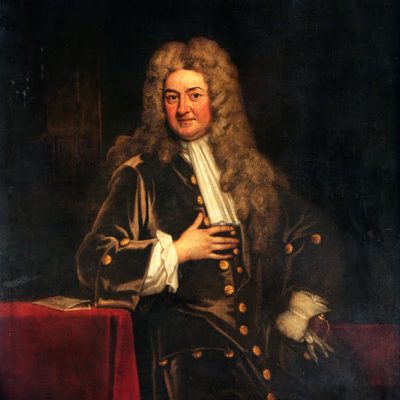
The Radcliffe Camera owes its existence to the visionary plans of the University of Oxford and the generosity of Dr. John Radcliffe. It was designed by the architect James Gibbs, who incorporated the upper reading room of the Bodleian Library into his final plans. The construction of the Radcliffe Camera began in 1737, and the building was officially opened in 1749. This historic moment marked the university’s commitment to providing exceptional educational resources for its students and faculty.
The Significance of Radcliffe Camera in History
Situated in the iconic Radcliffe Square, the Radcliffe Camera holds a significant place in the history of Oxford University. It has been the center of academic and literary pursuits, housing a wide range of books and resources in various disciplines. The Radcliffe Camera has played a crucial role in the development of English literature, history, and medical research, making it an indispensable part of the university’s intellectual fabric. Its presence in the heart of Oxford University symbolizes the institution’s commitment to scholarly excellence
The Remarkable Architecture of Radcliffe Camera
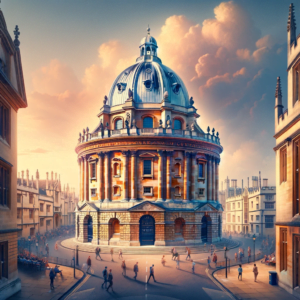
As you approach the Radcliffe Camera, you will be captivated by its impressive architecture. The building is a harmonious blend of classical and modern influences, showcasing the expertise of architects such as James Gibbs, Nicholas Hawksmoor, and Christopher Wren. The architectural style of the Radcliffe Camera reflects the university’s commitment to timeless elegance, with its grand façade and stunning domed roof. Let’s explore the architectural style of the Radcliffe Camera and uncover its unique features.
The Architectural Style of Radcliffe Camera
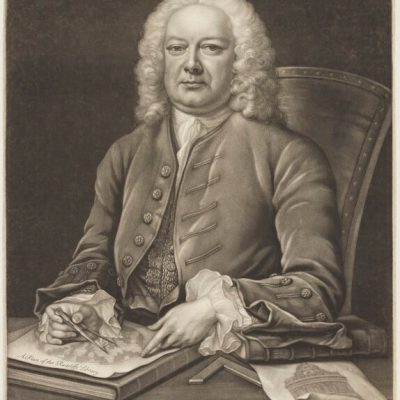
The Radcliffe Camera, a true architectural masterpiece, showcases a blend of classical and modern architectural styles. James Gibbs, the architect responsible for the building’s design, brought together elements of Baroque and Neoclassical architecture, creating a structure of immense beauty and elegance. The wooden model of the Radcliffe Camera, which guided the construction process, highlights the building’s meticulous attention to detail. The rad cam, as it is affectionately known, stands as a testament to the university’s architectural prowess and the genius of James Gibbs. Gibbs was also responsible for other famous pieces of architecture, including St Martin-in-the-Fields at Trafalgar Square and the Senate House at Cambridge University.
Unique Features of the Radcliffe Camera Structure
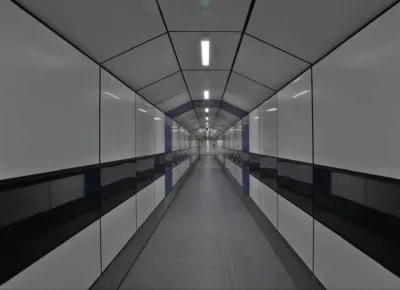
The Radcliffe Camera boasts several unique features that make it stand out from other buildings in Oxford. One of the most striking features is the upper reading room, which offers panoramic views of the city. The lower reading room, with its cozy ambiance, provides a serene space for scholarly pursuits. The Gladstone link, a passageway connecting the Radcliffe Camera to the rest of the Bodleian Library, adds to the building’s architectural allure. Another noteworthy feature is the tayton stone, a type of limestone used in the building’s construction, which gives the Radcliffe Camera its distinctive golden color in the upper section.
Inside the Radcliffe Camera
Step inside the Radcliffe Camera, and you’ll enter a world of scholarly excellence and intellectual pursuits. As a reading room of the Bodleian Library, the Radcliffe Camera provides a serene and inspiring environment for students, faculty, and researchers. Let’s explore the functionality of the Radcliffe Camera as a library, and discover the collection of books and resources it holds within its hallowed walls.

The Functionality as a Library

The Radcliffe Camera serves as the main reading room of the Bodleian Library, offering a quiet and conducive space for study and research. Within its walls, you will find the history faculty library, home to a vast collection of books on various historical periods and topics. The natural history section of the library houses books on the subject, attracting students and researchers with an interest in the natural sciences. Additionally, the underground bookstore, located beneath the north lawn of the library, offers a hidden treasure trove of literary resources, presenting visitors with the opportunity to explore a wide range of subjects with the assistance of a member of staff.
The Collection and Resources Inside

The Radcliffe Camera houses an extensive collection of books, journals, and resources that cater to the diverse interests of students and scholars. From medical books to English literature, the library offers a wealth of information on various subjects. Researchers can delve into the depths of the library catalogue to access the vast collection of books and journals, ensuring that they have the resources they need for their academic pursuits. The old library and the gladstone link are also notable sections within the Radcliffe Camera, providing additional resources and reading spaces for visitors.

Visiting the Radcliffe Camera
A visit to the Radcliffe Camera is a must for anyone exploring the fascinating city of Oxford. Whether you’re an architecture enthusiast, a history buff, or simply curious about the university’s rich heritage, the Radcliffe Camera offers an unforgettable experience. Let’s take a closer look at what to expect when visiting this iconic Oxford building, including guided tours by Oxford University alumni, important landmarks, and practical tips for your visit.
A quick Guide to Radcliffe Camera
Things to note when visiting the radcliffe camera.
When visiting the Radcliffe Camera, history enthusiasts are in for a unique experience. The building’s historic connection to the university church of St. Mary adds to its allure, offering visitors a glimpse into its fascinating past. Exploring the Radcliffe Camera also provides insight into its historic ties with the university’s esteemed alumni. Additionally, the wooden model of the Radcliffe Camera offers an interesting perspective on its design, adding depth to the visit. Notably, the historic Radcliffe Observatory and the Radcliffe Infirmary are conveniently located near the building, making it a must-visit destination for history and architecture aficionados. DID YOU KNOW that the Radcliffe Camera also offers the best view of Radcliffe Square from the top of its tower? Be sure to add a visit to the University Church of St Mary the Virgin, also known as the “Virgin Church,” to your itinerary for stunning views and a deeper understanding of the area’s history.
The Visitor's Guide to Radcliffe Camera
Embark on a journey through history and architecture with the Radcliffe Camera tour. Visitors are treated to the grandeur of the Bodleian Libraries, including the main reading room, showcasing the building’s architectural and historical significance. As you marvel at the impressive library, the tour guide shares intriguing insights into the Radcliffe Camera’s past and present, enriching your experience. This tour offers a unique opportunity to explore the early 19th-century building and its significance within Oxford’s rich academic history and heritage, including the fifteenth-century Divinity School and Convocation House.
Movies and TV Shows Featuring the Radcliffe Camera
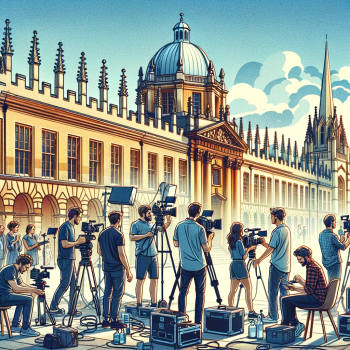
The Radcliffe Camera has made appearances in films such as the 2024 film WONKA , adding historic grandeur to scenes and showcasing its timeless appeal. Its cameos in British television shows highlight its cultural prominence and architectural significance, enhancing its reputation as an iconic landmark.
Visit Oxford Radcliffe Camera on a city walking tour
Immerse in the architectural history and significance of the Radcliffe Camera on a city walking tour . Gain a unique perspective on Oxford’s heritage as you explore the comprehensive view of this historic building. Enrich your experience with insights into the Radcliffe Camera’s role in the city’s past, offering a captivating journey through time.
You can find out more information about the Radcliffe camera On the offical oxford university site link below
https://www.bodleian.ox.ac.uk/bodley/find-us/radcliffe_camera
Location of radcliffe camera https://www.google.com/maps/dir//51.7534431,-1.2540507/@51.7534431,-1.2540507,14z?entry=ttu
Leave a Comment Cancel Reply
Your email address will not be published. Required fields are marked *
Save my name, email, and website in this browser for the next time I comment.
Radcliffe Camera
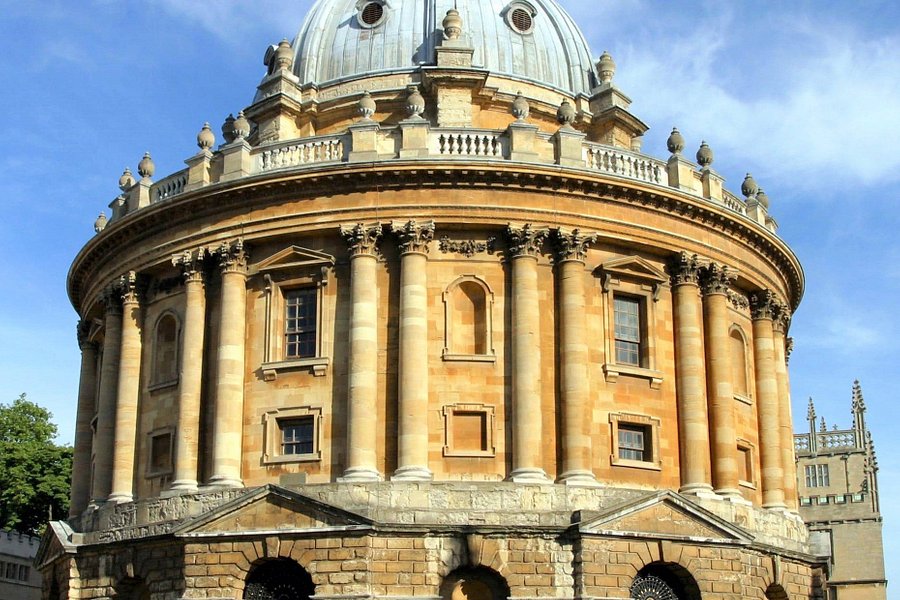
Most Recent: Reviews ordered by most recent publish date in descending order.
Detailed Reviews: Reviews ordered by recency and descriptiveness of user-identified themes such as wait time, length of visit, general tips, and location information.

Also popular with travelers

Radcliffe Camera - All You Need to Know BEFORE You Go (2024)
Home > Articles > Enjoying Oxford
Oxford Free Self-Guided Walking Tour to Plan a Visit at Your Own Pace
Oxford is a gem of a town. There’s so much to see, and you can visit practically all of their attractions on foot. This is why walking tours are an excellent option for those coming to Oxford. Some will choose to have a guide, while others might prefer to explore the city, its University museums and sights at their own rhythm . We’ve created these maps to help you do exactly that. Below, you will find free walking tour maps (you can download them to your phone if you prefer) to see all that Oxford has to offer. Pubs and restaurants? We got it. Colleges and libraries? Of course! How about a bit of shopping or a Harry Potter-themed adventure? Look no further.
(Want to see a self-guided walking tour for Oxford Museums only? Check this link ).
Oxford Basic Free Self-Guided Walking Tour
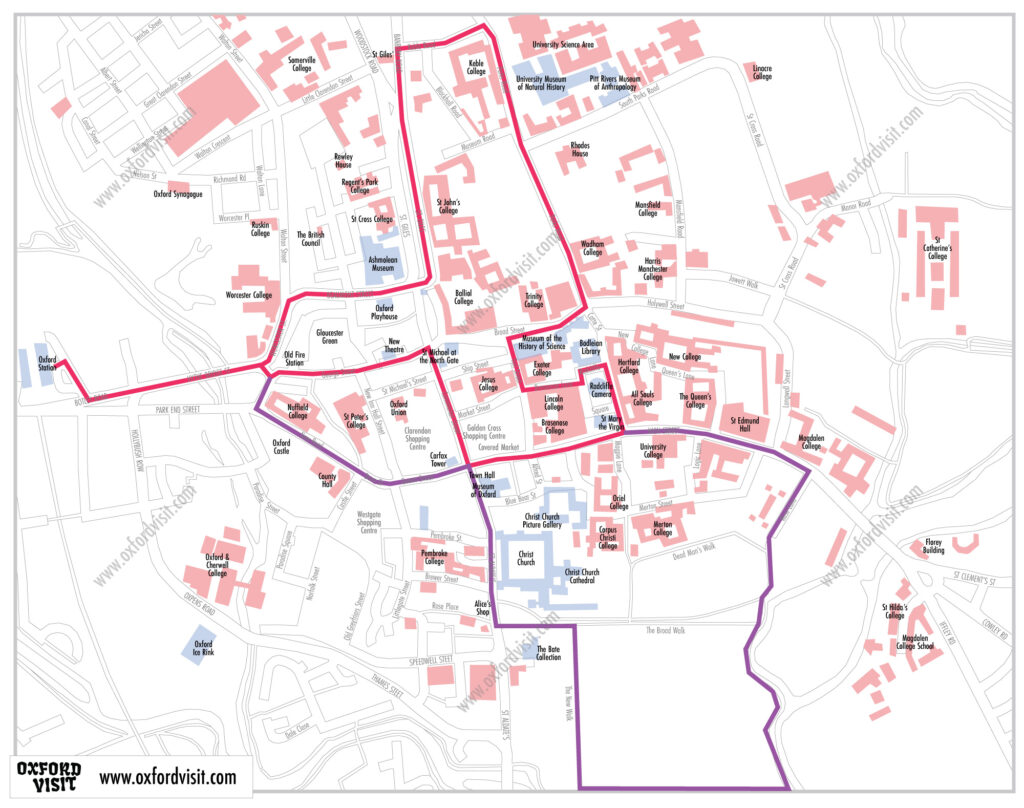
Download this Image
Let’s start with a quick overview of the town. This walking tour is perfect for those visiting Oxford for just a few hours. It is a leisurely tour that should give you a great idea of what the town is all about. There are two paths I like to do myself when walking around Oxford:
In pink : Start from the train station or bus station and make your way to the centre of the city. This short walk should take about 30 minutes to an hour at a relaxed walking pace – and cover the best attractions in Oxford: Its colleges, churches, museums, and shops.
In purple : If the day is nice and you have an extra 40 minutes, you can also walk down St Aldate’s and into Christ Church meadow, where you will be able to relax in the shade and see the famous Cherwell river. Make your way back north through the Botanic Garden path and enter the city through the east, where you will see some of the oldest colleges of the university.
Let’s go into a little more detail if you want to do the short (or pink) self-guided walking tour.
- Arriving at the train or bus station, walk down George Street. If you are already hungry, this is the perfect opportunity to grab a bite, as there are several restaurants and bars here. If not…
- Continue walking until you reach St Michael at the North Gate . This was the city limit when Oxford was surrounded by a wall!
- Turn right and walk down Cornmarket Street, the central commercial vein. Don’t miss 24-26 Cornmarket Street , a house dating back to the 14th century (it’s on the left, right across the tower).
- You can continue walking down the street and check out the Covered Market , or turn left on Market Street and continue down Braselose Lane, which will eventually lead you to the landmark Radcliffe Camera library. To your right, you will also see the Church of St Mary the Virgin, and to the left, the Bodleian Library .
- Turn left again after you exit, and you’ll see the Sheldonian Theatre and, right across Broad Street, Trinity College .
- Walk up to Corn Steet and turn left again, so you can enjoy a pleasant stroll up Parks Road and see the Natural History Museum and Keble College .
- You can continue until Keble road to close the circuit or turn left on Museum Road to see a secret passage and the most beautiful tree in Oxford!
What You Shouldn't Miss in This Self-Guided Walking Tour
(You can click here to see all the historical places you will encounter )
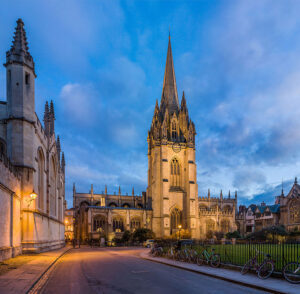
University Church of St Mary the Virgin
This is the largest church in Oxford and is popular with students, professors, and visitors. The first church here was built in 1086, although the building that can now be seen on the north side of the chancel is from 1320 (when the Univesity was officially founded). The Baroque porch (considered “the most beautiful porch in the world”) was designed by Nicholas Stone, and the tower (also from the 13th century) can be climbed and offers an excellent view of Oxford.
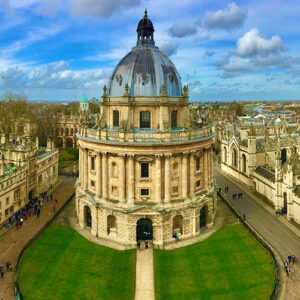
Radcliffe Camera
This circular library is probably considered by most locals and visitors as “the very centre of Oxford”. It was built in 1749 by James Gibbes and has an Edwardian Palladian style. Although it appears to have three stores from the outside, it’s actually one main floor. This floor is divided into different bays separated by Corinthian columns. Today, the Radcliffe Camera holds over 600,000 books. It’s open to students but not to the public.
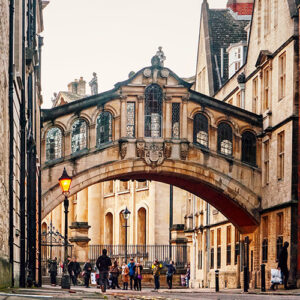
The Bridge of Sighs
Although you also won’t be able to cross this bridge (unless you are a Hertford College student), you can still admire its beauty from the street level. The bridge was built in 914 by Sir Thomas Jackson and received its name because it looks like its homonym in Venice. The geometrical concept is also inspired by Archimedes in the 3rd Century BC (the area of the parabolic segment is 4/3 of an inscribed triangle).
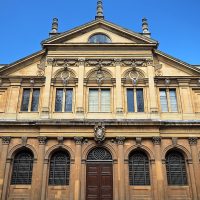
St John’s College
A constituent college of the University of Oxford, St John’s College was founded in 1555 as a men’s college but turned coeducational later.
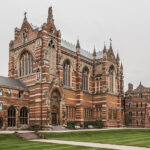
Keble College
Keble College is one of the University of Oxford’s constituent colleges. It is located on Parks Road, opposite the University Museum.
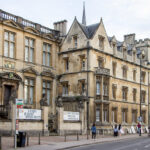
Exeter College
A constituent college of the University of Oxford in England, Exeter College is the fourth-oldest college of the university.
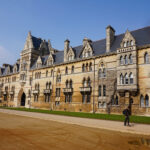
Christ Church College
Christ Church is college of the University of Oxford. It was founded in 1546 by King Henry VIII and is one of the larger colleges.
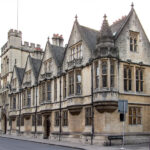
Brasenose College
Oxford University’s Brasenose College (BNC) was founded in 1509 and is home to one of the oldest rowing clubs in the world.
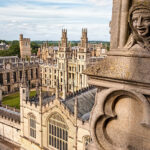
All Souls College
All Souls College is a constituent college of the University of Oxford. It was founded by Henry VI and it has no undergraduate members.
See all Oxford Colleges >
Oxford Museums
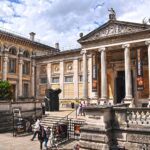
Ashmolean Museum of Art and Archaeology
The Ashmolean Museum of Art and Archaeology in Oxford is Britain’s first public museum. It was founded in 1683.
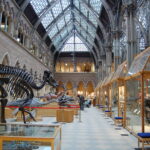
Oxford University University Museum of Natural History
The Oxford University Museum of Natural History or OUMNH displays many of the University of Oxford’s natural history specimens.
See all Oxford Museums >
Oxford Libraries
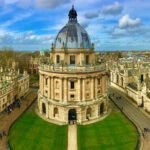
Radcliffe Camera is a neo-classical style building inside Oxford University, built from 1737 to 1749 for the Radcliffe Science Library.
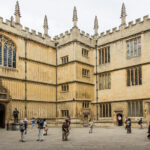
Bodleian Library
The Bodleian Library is one of Oxford’s most famous landmarks. Among the oldest in Europe, it’s easy to visit and incredible to see.
See all Oxford Libraries >
Un-Missable Stops in an Oxford Walking Tour
If you’re exploring Oxford on your own, there are a few places you should consider stopping by. This includes colleges (which are normally open to visitors during the day), museums, the Botanic Garden , shops, and definitely, if you can, the Bodleian Library !
Of course, Oxford has something for everyone, so if you’re looking for places to shop or parks to relax, you can see some good options in the list below this section.
However, before you move on, if you’re interested in visiting the best Oxford museums (and combining them with the city walking tour), you can use this map.
Also, here’s the complete guide covering the most popular Oxford Museums .
And the direct link to download the museum walking tour map .
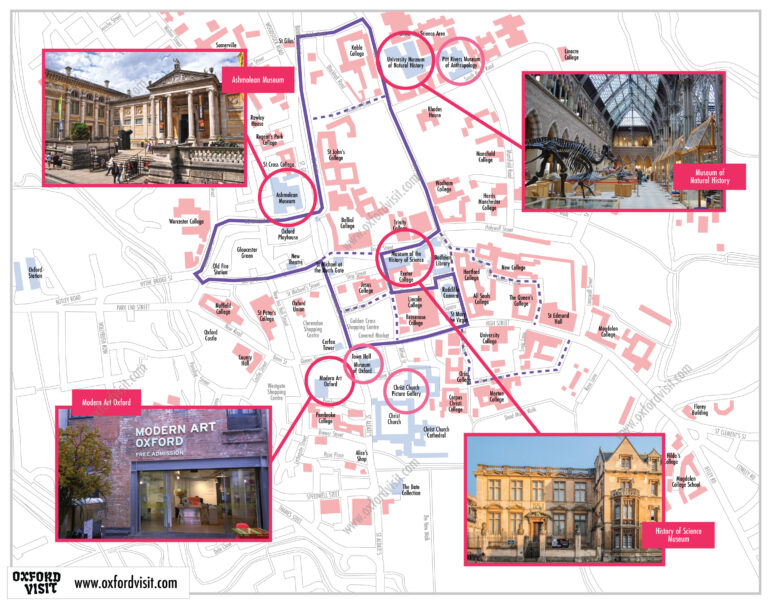
Best for Shopping in Oxford
There are two – possibly three – shops you should NOT miss if you’re visiting Oxford and doing a self-guided walking tour. These are Alice’s Shop (with tons of Alice in Wonderland memorabilia, all beautifully displayed in a historically-relevant little building!), The Shop of Secrets (more Harry Potter merch than you can dream of), and Blackwell’s Bookshop , founded in 1879.
Of course, as Oxford continues to grow, there re several other places you can visit if you’re looking for unique gifts or just a memorable experience. Below is a more comprehensive list with all of them.

Blackwell’s Bookshop
Blackwell’s Bookshop first opened its doors in 1879, on Broad Street, Oxford. They have been trading continuously from there ever since. The History of Blackwell’s Bookshop The first Blackwell’s Bookshop
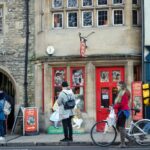
Alice’s Shop
Alice’s Shop is a little shop placed exactly where Alice Liddell (the “real” Alice that inspired the books) used to buy sweets.
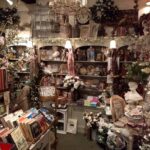
Arcadia Bookstore
Arcadia is a popular bookstore in Oxford, offering second-hand books and stationery with a vintage and whimsical vibe.

The Shop of Secrets
The Shop of Secrets is Oxford’s chamber of Harry Potter collectibles and merch. A shopping must-to in the city, this is why you should visit.
Parks and Meadows
Oxford has many beautiful parks and meadows – which make perfect spots for a picnic or a relaxing stop. These parks are large and tend to have exotic plants and students practising sports or reading a book under the shadow of a tree. The best thing about adding a visit to a park during your self-guided walking tour is that you can visit them any time of the year. University Parks , for example, are evergreen and have seats no matter the season. Of course, if you like plants and quietness you should not miss the Botanic Gardens, they are included in the map above and have exotic species, lots of secret corners, and even a pond with fish!
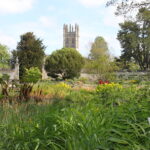
Oxford Botanic Gardens & Arboretum
The Oxford Botanic Garden is the oldest botanic garden in the UK. It was founded in 1621 and holds unique and important species.
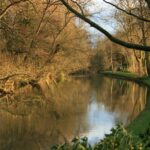
Christ Church Meadow
Christ Church meadow is open to the public all year round. This open space in the heart of Oxford is an ideal choice for recreation.
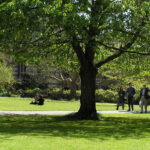
Oxford University Parks
Oxford University Parks (or University Parks) is a large park area northeast of the city. The park is open to the public during the day.

Port Meadow
Port Meadow is a large open space in the north of Oxford. The River Thames flows through its heart and the plains are home to many animals.
Learn More About Oxford

Oxford Botanic Garden & Arboretum: A Brief History
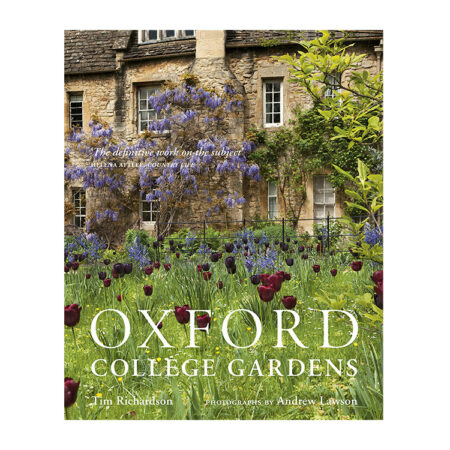
Oxford College Gardens
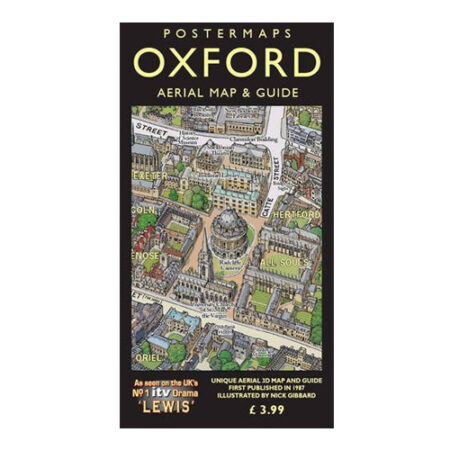
Oxford Aerial Map and Guide

Insight Guides Great Breaks Oxford
More articles about enjoying oxford.
Explore new and familiar locations, visit the parks, step into a college, or drop by one of the many quirky shops Oxford has to offer. Browse All >

Halloween Costumes Oxford – Best Ideas and Where to Get Them
Are you looking for Halloween costume ideas and in Oxford? Here are some suggestions to stand out at your next Halloween party.
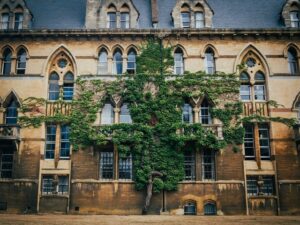
Should I Visit Oxford Or Cambridge? And Which University Is Better?
Use this guide to compare and contrast the two cities and universities.
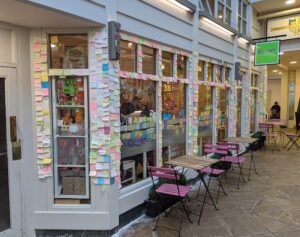
Best Bubble Tea in Oxford, When to Visit and What to Order
Oxford is a perfect place to find a good bubble tea, as there are several excellent options. Here are all of them and what they offer.
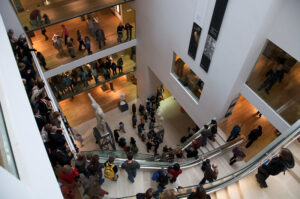
Free Self-Guided Tour: Oxford’s Ashmolean Museum of Archaeology
The Ashmolean is one of the world’s most renowned archaeological museums. Plan your visit, what to see, best treasures, and when to go.

All of Oxford’s Michelin Star Guide Restaurants (Ranked!)
Oxford boasts several restaurants recognized by the prestigious Michelin Guide, offering a diverse array of cuisines and fine ingredients.
More Articles About Oxford
Our collection of articles with ideas for things to do and see, the history of this incredible city, the University, its museums, literature and movie inspirations, filming locations, and much more.
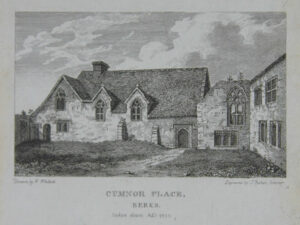
Oxford Ghost Stories: The Ghost of Amy Robsart at Cumnor Place
Cumnor Place, located near Oxford, is associated with the tragic tale of Amy Robsart, the wife of Robert Dudley.

Oxford University Interviews: What to Know & How to Plan
Oxford University interviews are a crucial component of the admissions process. Here’s what you need to know about them.
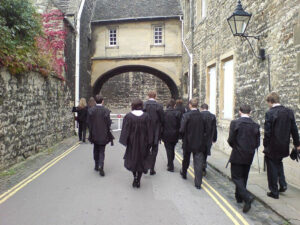
Why Should You NOT Study at Oxford? The Main Downsides
The University of Oxford is not for everyone, and that’s fine! Here are the main downsides or disadvantages of going to Oxford.
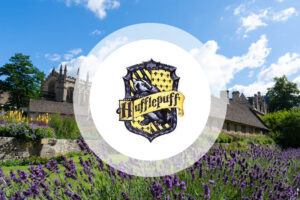
Oxford for Hufflepuffs: The Best Five Things To Do
A guide for Hufflepuffs who want to experience Oxford in their own way. Here are the top things this Hogwarts house might enjoy and why.

All of Oxford’s Harry Potter Filming Locations and How To Visit Them
A lot of Harry Potter scenes were filmed in Oxford. Explore the exact locations, what they were used for, and how to visit them.

Can You Get Into Oxford University If You Are an Older or Mature Student?
If you’re over 21 years old when you start your Oxford course, you will be considered a mature applicant. The process is a little complex.

Oxford University Admissions Tests: Which Ones You Need and How to Prepare
Many Oxford University courses require you to pass admissions tests. In this article, we will explain what they are, and which ones you will need.
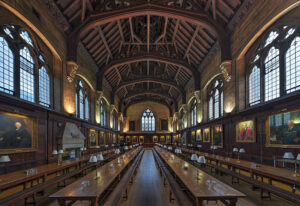
Oxford University Formal and Informal Halls. What and When Do They Take Place
Traditional collegiate colleges like Oxford and Cambridge hold formal and informal dinners many times a year. Learn more about this tradition.

Getting Married in Oxford: All of Oxford’s Wedding Venues (+ Pictures)
Tips and ideas to plan the perfect breath-taking Oxford wedding. Exclusive venues, wedding photo locations and romantic packages.

The Easiest Way to Get a SIM or eSIM Card in Oxford
Are you considering buying a SIM card for when you arrive at or visit Oxford? Here’s a super-easy way to get one in advance.
Everything about Oxford and its surrounding areas, including places to see, things to do, and information about all the colleges, libraries, and museums.
As an Amazon Associate, I earn from qualifying purchases.
www.OxfordVisit.com © 2024 – Privacy Policy
Privacy Overview

IMAGES
VIDEO
COMMENTS
Daily. 90 - 120 minutes. Starts at the Weston Library steps. Available in English. From £20 per person. Discover the vibrant history of the oldest university in the English-speaking world on the only official University of Oxford walking tour. Learn how Oxford grew from a small market town to become the city of dreaming spires.
Radcliffe Camera Oxford Address . The Rad Cam is located in Radcliffe Square. Radcliffe Sq, Oxford OX1 3BG. On a Tour . Take the stress out of planning your Radcliffe Camera Oxford visit with a guided tour like this one. You won't see the Radcliffe Camera Oxford inside, but tours will be led by local specialist guides who can explain the ...
According to Tripadvisor travelers, these are the best ways to experience Radcliffe Camera: Oxford University Walking Tour With University Alumni Guide (From $31.67) Oxford Harry Potter Insights entry to Divinity School PUBLIC Tour (From $49.43) Oxford City and University Walking Small Group PUBLIC Tour (From $38.01)
The Radcliffe Camera is a building of Oxford University, designed by James Gibbs in neo-classical style and built in 1737-49. It is perhaps the most iconic building in the whole of Oxford, leading to many tourists assuming it must be a town hall. It's actually a library, with three floors full of books and gorgeous spiral staircases winding ...
5,222. Walk the halls of one of the world's oldest and most famous universities on this walking tour of Oxford University. Get a glimpse of student life as you peek inside the famous Bodleian Library and see landmarks like the University Church of St. Mary, Radcliffe Camera, and Trinity College.
The Bodleian Library, Radcliffe Camera and Weston Library are three of Oxford's most iconic libraries, located in the heart of the city. Get exclusive, behind-the-scenes access on a guided library tour, or explore the historic city of Oxford on a walking tour with one of our expert guides.. Now on at the Weston Library are two fantastic exhibitions, part of our Season of Great Writers.
A Grand Radcliffe Camera Banquet on June 14, 1814. The banquet was held to celebrate what was believed to be a period of peace during the Napoleonic Wars. This "illusory peace" was short-lived, but the event itself was a grand spectacle. Many prominent figures from the allied side against Napoleon attended the banquet.
Radcliffe Camera: Our most recommended tours and activities. 1. London: Harry Potter Studio Tour and Oxford Day Trip. Join a full-day bus trip from London which combines a trip to the Warner Bros Studio Tour 'The Making of Harry Potter' with a walking tour of Oxford University. Start your tour at the historic city of Oxford, home to England's ...
Classic City Walk. A 90-minute to two-hour walking tour of the City of Dreaming Spires, going to all the best places. Depending on the date and time of day we can include entrance and a guided tour of one of The University of Oxford's famous colleges.
Town & Gown Walking Tour. Duration: 90 mins. Discover the wider area of Oxford City Centre with our longer Town & Gown Walking Tour. You'll have a chance to learn about the history of our fascinating "city of dreaming spires" and have all your questions answered by our friendly and professional tour guides. Town & Gown - find out more.
Visitors can also take a guided walking tour of Oxford that includes a visit to the Radcliffe Camera and other notable landmarks in the city. The building is particularly beautiful at sunset when the warm light of the setting sun illuminates the limestone facade and creates a magical atmosphere.
The Rad Cam, also known as the "heart of Oxford", was designed by James Gibbs built between 1737 and 1749 with £40,000 founded by Dr John Radcliffe upon his death in 1714. Radcliffe, the most successful physician in England, began to explore the idea of a library about two years before his death. Three of his schemes propose a rectangular ...
This Oxford City Centre walking tour will allow you to see the city's highlights while exploring little lanes and secret shortcuts only the locals know. An ideal self-guided tour if you're in Oxford for just a few hours. ... Radcliffe Camera is a neo-classical style building inside Oxford University, built from 1737 to 1749 for the ...
3. Oxford: Official University and City Walking Tour. Explore Oxford, the city of Dreaming Spires, on a walking tour with an expert guide from the city's tourism board. Be shown the city's most famous sights, uncover its hidden history, and enjoy all the astonishing stories about Oxford's key characters- real and fictional.
Visit Oxford Radcliffe Camera on a city walking tour. Immerse in the architectural history and significance of the Radcliffe Camera on a city walking tour. Gain a unique perspective on Oxford's heritage as you explore the comprehensive view of this historic building. Enrich your experience with insights into the Radcliffe Camera's role in ...
The Radcliffe Camera or Library is a magnificent round classical building designed by the famous James Gibb, who also designed St. Martin's in the Field at Trafalgar Square. It was built between 1737-1749 from a bequest of £40,000 from Dr. John Radcliffe who died in 1714. The area around the Camera is called Radcliffe Square and is one of the ...
Radcliffe Camera is a neo-classical building inside Oxford University, built from 1737 to 1749 for the Radcliffe Science Library by James Gibbs. Radcliffe Camera is considered one of the finest examples of the architectural style in England. Its location is between the Old Bodleian College to the south, St Mary's Church to the north, and All Souls College to the east.
Radcliffe Camera Tours and Tickets. 9,659 reviews. Located in the heart of Oxford, the Radcliffe Camera is one of the city's most recognizable and photographed landmarks, with its unusual shape and impressive dome. Completed in 1749, it was the first rotunda library in England, and today it is one of the main reading rooms of the Bodleian ...
Book the most popular Walking tours in Radcliffe Camera. Best price and money back guarantee! Read the reviews of your fellow travelers.
Explore Oxford, the city of Dreaming Spires, on a walking tour with an expert guide from the city's tourism board. Be shown the city's most famous sights, uncover its hidden history, and enjoy all the astonishing stories about Oxford's key characters- real and fictional. Meet your guide at the grand and very old Broad Street (once the city ...
In pink: Start from the train station or bus station and make your way to the centre of the city. This short walk should take about 30 minutes to an hour at a relaxed walking pace - and cover the best attractions in Oxford: Its colleges, churches, museums, and shops. In purple: If the day is nice and you have an extra 40 minutes, you can also ...
Oxford, South East England. Oxbridge Audio Walking Tours - Guided By Expert Historian. from $25.21. Likely to Sell Out. Oxford, South East England. Oxford University Walking Tour with Afternoon Tea. 4. from $61.81. Viator earns higher commissions on experiences featured here.